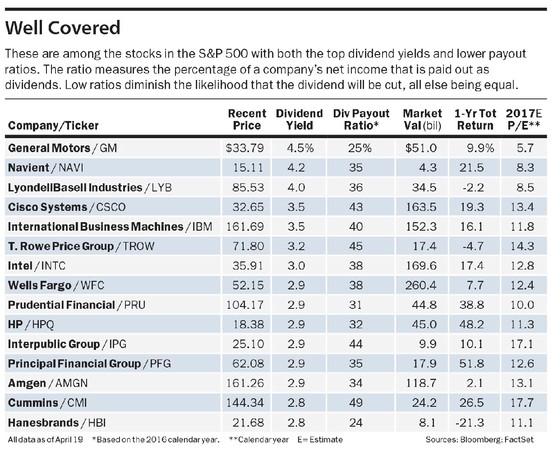
EM equities have the highest annualized return, but the lowest AR, while catastrophe bonds have a somewhat lower return, but the highest AR. Although the EM equities have higher return, they don’t enhance the efficiency of the original 60/40 portfolio. In theory, this bank loan strategy might be more beneficial to the entire portfolio than the EM equity, despite the fact the bank loan strategy has a slightly lower Sharpe Ratio. If an asset’s expected return is too high relative to its beta, i.e. there is alpha, the portfolio’s Sharpe Ratio could be improved by allocating more to that asset.
There are several actions that could trigger this block including submitting a certain word or phrase, a SQL command or malformed data. Yarilet Perez is an experienced multimedia journalist and fact-checker with a Master of Science in Journalism. She has worked in multiple cities covering breaking news, politics, education, and more.
- Ratios that measure risk-adjusted returns can be interpreted differently.
- They do not receive the same benefit of having an appraisal that does not change between reappraisals.
- The alpha itself is a figure showing the return on the asset after adjusting for this comparative risk.
- Because we have less information about these stocks, investors, through their own research, may be able to uncover promising stocks the market has overlooked.
Maximizing this KPI is necessary for maximizing the Sharpe ratio, a widely used measure of fund performance. For a hedge fund, the ratio of the fund is itself the Sharpe ratio of the hedged position that neutralizes the benchmark risk. First, Dr. Hecht reviews Markwitz’s “Mean-variance” Modern portfolio theory (MV-MPT), which is an algorithm that maximizes expected returns for a given level of risk. The alpha takes into account how much fluctuation there has been in a particular asset’s price and how this compares to fluctuation in the underlying market. The idea is that an asset that has fluctuated more widely in value is more risky and thus more susceptible to luck rather than skill.
KPI of the Day – Investment: # Appraisal ratio
The appraisal ratio is often used to determine how effective a fund manager’s investment-selection ability is. It compares the performance of return of a given fund to the benchmark and also companies the return to the unsystematic risk. Generally, fund managers want to have returns that surpass the market benchmark, this goal informs their decisions when it comes to investment selection. The appraisal ratio gives an insight into the performance of a fund manager by examining the return of the selected investments against their underlying risks.

It is easier to understand the alpha by looking at what it actually represents. One of the areas where the appraisal ratio perhaps has an edge is in its index comparison. Index funds are typically the benchmark used in comparing investment performance and the market return is usually higher than the risk-free return. Even though the market value of property is ever-changing, the county property appraisals typically do not change between reappraisals. (For the sake of brevity, the exceptions to this rule will not be discussed in this article). Fortunately, there are several ways for investors to analyze how good a job fund managers do.
Suggestions from Dr. Hecht to help you avoid common mistakes on performance evaluation:
Stocks for which the Appraisal Ratio is significantly higher than 1.0 and which have high Predictability rankings may be a good place to start the search for stocks. Experienced investors, however, may find lower Predictability stocks intriguing. Because we have less information about these stocks, investors, through their own research, may be able to uncover promising stocks the market has overlooked.
- Not everyone is the same and each investor will have varying risk tolerance levels, depending on factors such as age, financial situation, income, and general personality.
- (For the sake of brevity, the exceptions to this rule will not be discussed in this article).
- An appraisal ratio can be used in different contexts to describe or measure the performance of a fund compared to the benchmark.
- One of the ways to do so is by assessing the # Appraisal ratio indicator.
- To calculate the appraisal ratio, the fund’s alpha is divided by the unsystematic risk of the funds in which they invested.
One of the ways to do so is by assessing the # appraisal ratio indicator. The # Appraisal ratio helps measure the financier’s performance by comparing the return of their stock picks to the specific risk in the investment basket. Focusing on alpha controls for beta, but doesn’t account for the alpha’s volatility (risk).
The Important, Yet Underutilized, Appraisal Ratio
Once the ratio study has been completed, the DPA submits each county’s median ratio to the State Board of Equalization (SBOE) for final approval. Once approved the tangible personal property and public utility appraisals will be equalized (adjusted downward) by the median ratio for each respective county. This step guarantees that these property types are treated equitably with the real property. An appraisal ratio can be used in different contexts to describe or measure the performance of a fund compared to the benchmark.

Measures the amount of risk a fund manager takes, based on the selected stocks, by comparing the fund’s adjusted return, assuming the market return is zero, to the portfolio’s unsystematic risk. The higher the ratio, the better the performance of the manager in question. Low appraisal ratios signal that a fund is poorly run, taking on a lot of risk to generate the returns it delivers.
Appraisal Ratio
Managers of an active investment fund are tasked with selecting a basket of investments capable of beating the returns of a relevant benchmark or the overall market. While that sounds easy in practice, few regularly succeed in achieving this goal, especially when taking the fees that they charge into consideration. Like the appraisal ratio, the Sharpe ratio also functions as an indicator of risk-adjusted returns.

The alpha itself is a figure showing the return on the asset after adjusting for this comparative risk. Ratios that measure risk-adjusted returns can be interpreted differently. Not everyone is the same and each investor will have varying risk tolerance levels, depending on factors such as age, financial situation, income, and general personality. For questions related to reappraisal, ratio studies, or equalization contact your CTAS Property Assessment Consultant.
One method to determine their investment-picking ability is to use the appraisal ratio. If you own property in Tennessee, you are probably aware that your county undergoes a countywide reappraisal of real property every 4, 5, or 6 years. The reappraisal process allows county appraisals to be adjusted, up or down, to reflect the current real estate market. In theory, once a reappraisal has been completed, property appraisals should represent what a property would sell for on the open market—at least for a short while.
Real Estate Software Market Share Size 2023 : Top Players, Market … – Digital Journal
Real Estate Software Market Share Size 2023 : Top Players, Market ….
Posted: Mon, 07 Aug 2023 03:46:09 GMT [source]
The unsystematic risk, otherwise known as non-systematic risk, measures how much fluctuation there has been in the assets chosen by a fund manager, in comparison to the fluctuation of the entire market. The unsystematic risk thus covers issues that relate to those specific stocks, rather than overall market movements. The theory is that unsystematic risk can be lessened by diversification, or investing in a wider range of companies. The need for an appraisal ratio is due to the limitations of simply looking at the raw figures of a fund manager’s investments.
Appraisal Ratio: Overview, Calculation, Limitations
The state legislature and board of equalization have addressed these questions by requiring ratio studies and equalization. The lower the ratio, the worse the performance of the investment portfolio. Financiers, especially hedge fund managers, are expected to make sound financial decisions regarding their investments. Mutual funds, bonds, and stocks should yield positive results on the long run.
The appraisal ratio also measures a mutual fund’s alpha relative to its risk. This ratio also measures the performance of a fund manager by evaluating how his investment strategies are faring. The investment selection ability of a fund manager can be evaluated given the performance of the investments. Essentially, the appraisal ratio compares the alpha of a fund to its residual standard deviation otherwise known as risk. While the alpha is the amount of return an investment earns that surpasses the benchmark, the residual standard deviation measures the relative risk of the investment.
